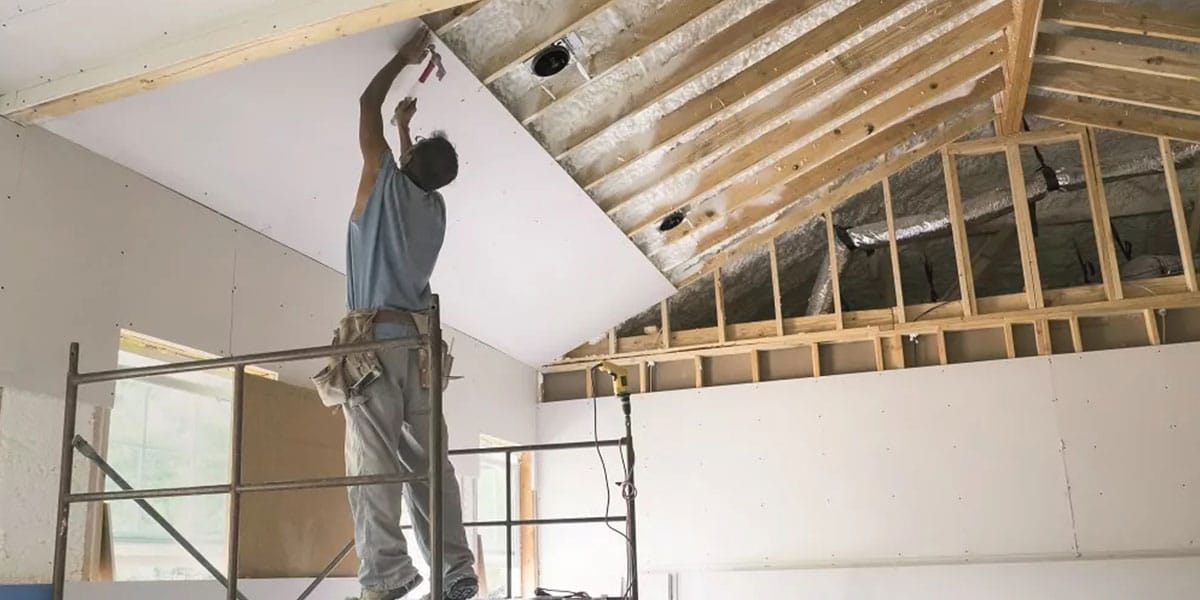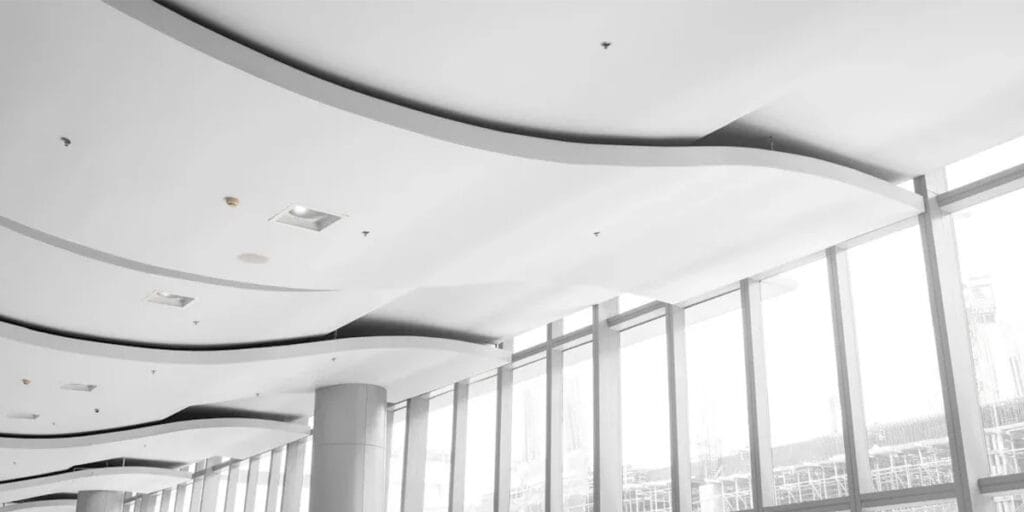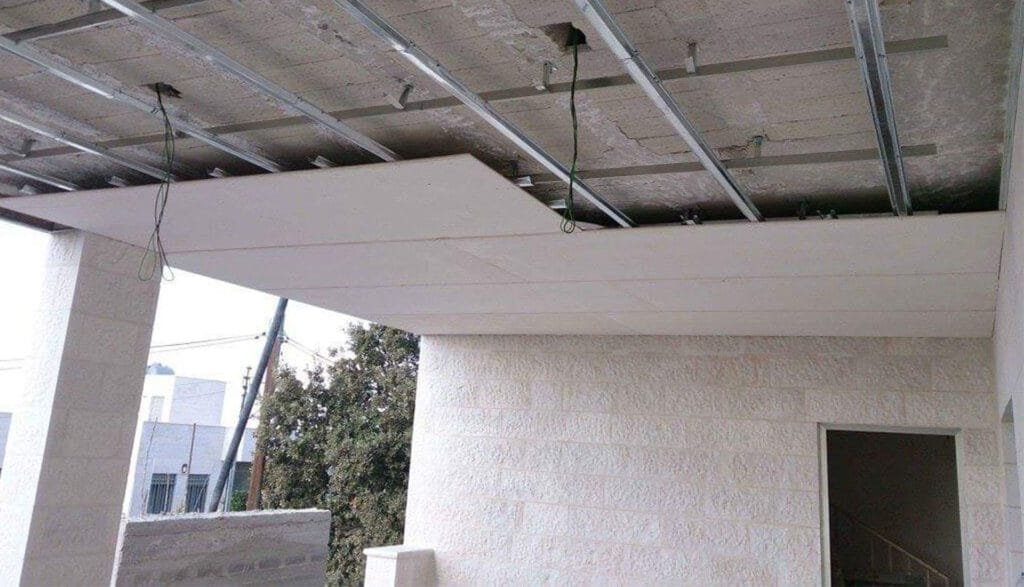
06 Apr Magnesium Oxide Board Ceiling Vs Calcium Silicate Board Ceiling
Table of Contents
When choosing ceiling materials, understanding the differences between Magnesium Oxide Board and Calcium Silicate Board is essential. Both materials excel in specific areas, but their performance varies significantly. Magnesium Oxide Board stands out as one of the most effective fireproof materials, offering superior fire safety and moisture resistance. On the other hand, Calcium Silicate Board provides good durability and affordability, making it a practical choice for budget-conscious projects.
The table below highlights their key characteristics:
Characteristic | Magnesium Oxide Board | Calcium Silicate Board |
|---|---|---|
Fire Resistance | Excellent | Good |
Moisture Resistance | Excellent | Good |
Durability | Rigid and durable | Strong but less durable |
Cost | More cost-effective long-term | Cheaper |
By comparing these features, you can determine which material best suits your ceiling needs.
Key Takeaways
Magnesium Oxide Board is great for fire safety projects.
Calcium Silicate Board costs less and is strong and water-resistant.
In wet areas, Magnesium Oxide Board stops water damage and mold better.
Think about long-term costs; Magnesium Oxide Board lasts longer and saves money.
Use Magnesium Oxide Board for big projects; it’s lighter and easier to install than Calcium Silicate Board.
Overview of Magnesium Oxide Board
Composition and Production Process
Magnesium oxide board is made from a combination of carefully selected materials, each contributing to its unique properties. The table below outlines the key components and their roles:
Component | Role in MgO Boards |
|---|---|
Magnesium Oxide (MgO) | Primary ingredient, crucial for fire resistance and strength. |
Magnesium Chloride (MgCl2) | Binder that holds components together, triggering a chemical reaction. |
Perlite | Enhances insulation, lightweight and porous. |
Wood Fiber | Increases strength and flexibility. |
Vermiculite | Expands when heated, providing fire resistance. |
Glass Mesh | Adds structural integrity and impact resistance. |
The production process involves three main steps:
Mixing Process: The raw materials, including magnesium oxide and glass mesh, are combined.
Curing Process: The mixture is shaped and hardened through a chemical reaction between magnesium oxide and magnesium chloride.
Final Product Properties: Boards are inspected for quality, ensuring they are lightweight, durable, and fire-resistant.
Key Properties of Magnesium Oxide Board
Fire Resistance and Passive Fire Protection
Magnesium oxide board excels in passive fire protection. It withstands temperatures up to 1200°F without melting or releasing harmful fumes. This makes it a reliable choice for ceilings in fire-prone areas. Its noncombustible nature ensures safety, even in extreme conditions.
Durability and Lightweight Design
This material offers a rare combination of strength and lightness. It resists impacts, pests, and mold, making it more durable than many traditional building materials. Its lightweight design simplifies installation, especially in high-rise buildings.
Environmental Impact and Sustainability
Magnesium oxide board is an eco-friendly option. It uses fewer natural resources during production and is fully recyclable. Unlike some building materials, it is non-toxic and asbestos-free. However, sourcing raw materials like magnesium carbonate can have environmental implications, particularly in regions like China where mining is restricted.
Applications of Magnesium Oxide Board
Residential Ceilings
You can use magnesium oxide board in kitchens, bathrooms, and other areas prone to moisture. Its fire resistance and soundproofing capabilities also make it ideal for living spaces.
Commercial and Industrial Ceilings
In commercial settings, magnesium oxide board meets stringent building codes. Its lightweight nature allows for easier installation in large-scale projects. It also provides passive fire protection, ensuring safety in industrial environments.
Overview of Calcium Silicate Board

Composition and Production Process
Calcium silicate board is crafted from a blend of natural and industrial materials. Its composition ensures durability, fire resistance, and moisture protection. The key components include:
Siliceous materials: Diatomaceous earth, fine quartz powder, and bentonite.
Calcium materials: Lime slurry, slaked lime, and calcium carbide slag.
Reinforcing fibers: Modern boards use alkali-resistant glass fibers or organic fibers instead of asbestos.
Additives: Water, soda ash, aluminum sulfate, and glass enhance the board’s properties.
The production process involves mixing these materials, shaping them into boards, and curing them under high pressure and temperature. This method creates a strong, lightweight material suitable for various ceiling applications.
Key Properties of Calcium Silicate Board
Thermal Insulation and Fire Resistance
You’ll find calcium silicate board excels in thermal insulation. It regulates indoor temperatures, reducing energy costs. Its fire resistance ensures safety, as it withstands high temperatures without releasing harmful substances.
Moisture Resistance and Longevity
This material resists moisture absorption, making it ideal for humid environments. It prevents mold and mildew, ensuring a longer lifespan for your ceilings.
Strength and Aesthetic Appeal
Calcium silicate board offers high durability and strength, supporting heavy loads without cracking. Its smooth surface allows for a polished finish, enhancing the aesthetic appeal of your ceilings.
Applications of Calcium Silicate Board
Residential Ceilings
In homes, calcium silicate board provides fire safety and moisture resistance. It works well in kitchens, bathrooms, and living spaces, offering a clean and durable ceiling solution.
Commercial and Industrial Ceilings
This material is widely used in commercial and industrial settings. Its fire resistance and thermal insulation meet safety standards in offices, factories, and warehouses. Additionally, its recyclability supports green building initiatives.
Tip: If you’re looking for a ceiling material that combines safety, durability, and environmental benefits, calcium silicate board is an excellent choice.
Head-to-Head Comparison of Magnesium Oxide Board and Calcium Silicate Board

Fire Resistance and Passive Fire Protection
Both magnesium oxide boards and calcium silicate boards are excellent fireproofing materials. They meet fire protection requirements in various applications, including tunnel fire protection. However, magnesium oxide boards often outperform calcium silicate boards in fire resistance tests. These boards withstand higher temperatures and provide superior passive fire protection.
Magnesium oxide boards are non-combustible and resist temperatures up to 1200°F without releasing harmful fumes. This makes them a safer choice for areas with strict fire protection requirements. Calcium silicate boards also offer good fire resistance but may not match the performance of magnesium oxide boards in extreme conditions.
Tip: If fireproofing is your top priority, magnesium oxide boards are the better option for your ceiling needs.
Moisture Resistance
Both materials perform well in damp environments, making them suitable for kitchens, bathrooms, and other moisture-prone areas. Magnesium oxide boards, however, are often regarded as more water-resistant than calcium silicate boards. They resist water absorption more effectively, preventing damage and mold growth over time.
Material | Moisture Resistance Level | Notes |
|---|---|---|
Magnesium Oxide Board | Higher | Considered more water-resistant overall. |
Calcium Silicate Board | Moderate | Good water resistance, but less than MgO. |
If you need a ceiling material that can handle high humidity levels, magnesium oxide boards provide better long-term performance.
Durability and Longevity
Magnesium oxide boards excel in durability. They handle bending and pressing without breaking, showcasing their rigidity and impact resistance. This makes them more resilient under physical stress compared to calcium silicate boards. While calcium silicate boards are strong, they lack the same level of toughness.
Magnesium oxide boards also withstand intense situations better, making them ideal for environments where durability is critical. For projects requiring long-lasting materials, magnesium oxide boards offer a clear advantage.
Cost and Affordability
When comparing the costs of magnesium oxide boards and calcium silicate boards, you’ll notice significant differences. Here’s a breakdown to help you decide:
Magnesium oxide boards usually have a higher upfront cost than calcium silicate boards.
Over time, magnesium oxide boards prove to be more cost-effective due to their superior durability and longer lifespan.
Calcium silicate boards are less expensive initially, making them a budget-friendly option for projects with limited funds.
If you’re planning a long-term project, magnesium oxide boards may save you money in the long run. Their durability reduces the need for frequent repairs or replacements. However, for short-term or low-budget applications, calcium silicate boards can still perform well without straining your finances.
Tip: Consider the total cost of ownership, not just the initial price, when choosing the right material for your ceiling.
Ease of Installation
Magnesium oxide boards are easier to install than calcium silicate boards. Their lightweight design and flexibility make them more manageable during installation, especially for ceilings. You’ll find that handling and positioning magnesium oxide boards requires less effort, which can save time and labor costs.
Calcium silicate boards, while durable, are heavier and less flexible. This can make the installation process more challenging, particularly in overhead applications. If you’re working on a large-scale project or need to complete the installation quickly, magnesium oxide boards offer a clear advantage.
Note: Choosing a material that simplifies installation can reduce project timelines and improve efficiency.
Suitability for Ceiling Applications
Residential Settings
When choosing a ceiling material for your home, safety and durability should top your list. Calcium silicate boards excel in residential settings due to their exceptional fire resistance. They act as a barrier against flames, enhancing safety for your family. These boards also resist moisture absorption, making them ideal for kitchens and bathrooms where humidity levels are high.
You’ll appreciate their thermal insulation properties, which help regulate indoor temperatures and improve energy efficiency. This feature can lower heating and cooling costs over time. Additionally, calcium silicate boards exhibit remarkable durability. They resist warping, cracking, and decay, ensuring your ceilings maintain their appearance for years. If sustainability matters to you, these boards align with eco-friendly construction principles.
Commercial Settings
In commercial spaces, magnesium oxide boards stand out as a versatile and reliable choice. Their polished and clean appearance enhances the aesthetic appeal of offices, retail stores, and other professional environments. These boards provide excellent fire resistance, ensuring safety in areas with strict building codes.
Moisture protection is another key advantage. Magnesium oxide boards perform well in kitchens, bathrooms, and other damp areas. They also offer soundproofing, creating a quieter and more comfortable atmosphere for employees and customers. Their lightweight nature simplifies installation, especially in high-rise buildings. Furthermore, these boards are environmentally friendly, containing no harmful substances and contributing to a smaller carbon footprint.
Calcium silicate boards also work well in commercial settings. They provide fire resistance and help regulate indoor temperatures, reducing reliance on heating or cooling systems. Their moisture resistance prevents mold and mildew growth, making them suitable for humid environments.
Industrial Settings
Industrial environments demand materials that can withstand extreme conditions. Magnesium oxide boards meet these requirements with their superior fire resistance and impact durability. They handle physical stress better than calcium silicate boards, making them ideal for factories and warehouses. Their flexibility allows for versatile applications, while their water resistance ensures long-term performance in damp or wet areas.
Calcium silicate boards also offer excellent fire resistance and thermal insulation, making them suitable for industrial ceilings. They help maintain stable indoor temperatures, which is crucial for energy efficiency in large facilities. While they may not match the impact resistance of magnesium oxide boards, they still provide a durable and reliable solution for less demanding industrial applications.
Tip: Consider the specific needs of your space—whether it’s fire safety, moisture protection, or insulation—when selecting a ceiling material for industrial use.
Magnesium oxide board and calcium silicate board each offer unique advantages for ceiling applications. Magnesium oxide board excels in fire resistance, moisture protection, and high-temperature stability, making it ideal for demanding environments. Calcium silicate board provides durability and affordability, which suit budget-conscious projects.
If you prioritize safety and longevity in building structures, magnesium oxide board is the better choice. For cost-effective solutions in less demanding settings, calcium silicate board works well. Evaluate your specific needs to select the material that aligns with your project goals.
